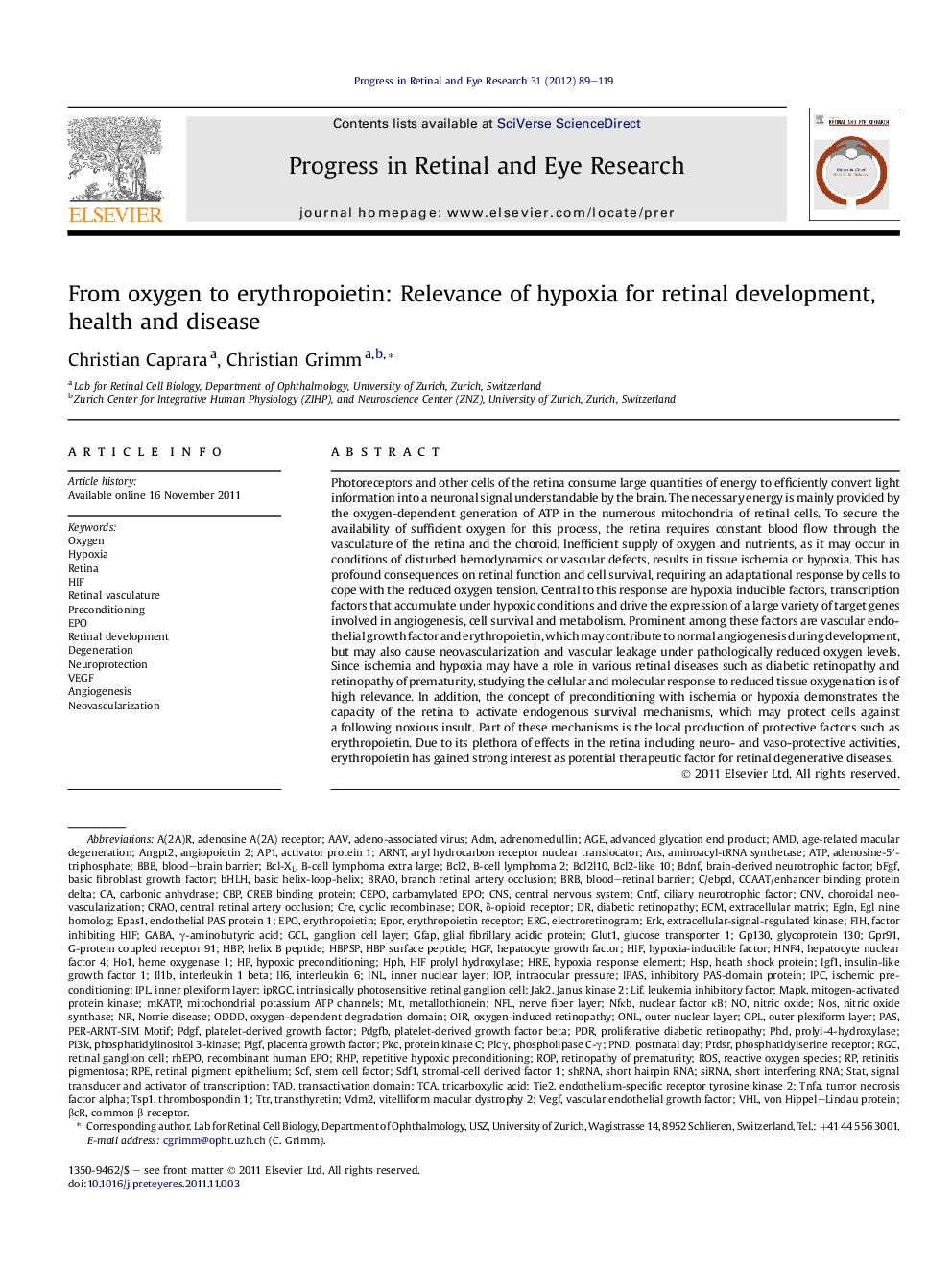| Article ID | Journal | Published Year | Pages | File Type |
|---|---|---|---|---|
| 6202751 | Progress in Retinal and Eye Research | 2012 | 31 Pages |
Photoreceptors and other cells of the retina consume large quantities of energy to efficiently convert light information into a neuronal signal understandable by the brain. The necessary energy is mainly provided by the oxygen-dependent generation of ATP in the numerous mitochondria of retinal cells. To secure the availability of sufficient oxygen for this process, the retina requires constant blood flow through the vasculature of the retina and the choroid. Inefficient supply of oxygen and nutrients, as it may occur in conditions of disturbed hemodynamics or vascular defects, results in tissue ischemia or hypoxia. This has profound consequences on retinal function and cell survival, requiring an adaptational response by cells to cope with the reduced oxygen tension. Central to this response are hypoxia inducible factors, transcription factors that accumulate under hypoxic conditions and drive the expression of a large variety of target genes involved in angiogenesis, cell survival and metabolism. Prominent among these factors are vascular endothelial growth factor and erythropoietin, which may contribute to normal angiogenesis during development, but may also cause neovascularization and vascular leakage under pathologically reduced oxygen levels. Since ischemia and hypoxia may have a role in various retinal diseases such as diabetic retinopathy and retinopathy of prematurity, studying the cellular and molecular response to reduced tissue oxygenation is of high relevance. In addition, the concept of preconditioning with ischemia or hypoxia demonstrates the capacity of the retina to activate endogenous survival mechanisms, which may protect cells against a following noxious insult. Part of these mechanisms is the local production of protective factors such as erythropoietin. Due to its plethora of effects in the retina including neuro- and vaso-protective activities, erythropoietin has gained strong interest as potential therapeutic factor for retinal degenerative diseases.
